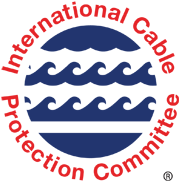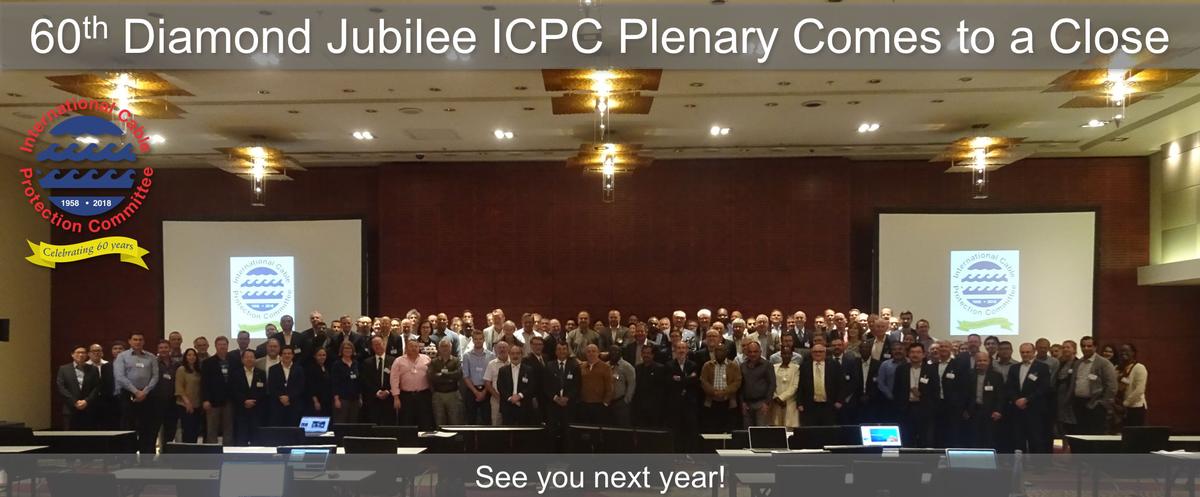
Day Three Summary
Friday, 13 April 2018The final day continued with an open session covering a broad range of interesting topics, which are summarised below. This sharing of information across players in the submarine cable industry is critical to ensure a better overall understanding of the cable ecosystem. Players are directly or indirectly related and affect each other, so collaboration is key to protect subsea infrastructure.
Open Session Highlights
National Oceanography Centre
“Monitoring the Dynamic Seafloor: Using Emerging Technologies to Better Understand the Threats Posed by Marine Geohazards”
The oceans depths are the harshest and most challenging environments sections of the global network infrastructure. This session provided an insightful view into what goes on the seabeds where submarine cables are laid. Contrary to popular belief, seabeds are dynamic environments subject to environmental forces, such as turbidity currents, which must be understood to best select submarine cable routing and installation methods. Geoscientific methods allow us to interrogate the reality of a dynamic seabed, which serves to further protect subsea cables.
Victoria University of Wellington
“Submarine Cables and Climate Change”
Oceans have an immense impact on climate and climate change, which also happens to be where most intercontinental submarine cables are laid. Severe storms can and have resulted in multiple submarine cable faults and outages. As climate change is believed to result in more severe and more frequent storms, their effect on submarine cable faults and outages will intensify, especially on existing cables that did not take climate changes into account. Although climate change does facilitate Arctic cables, unknowns associated with subsea Arctic routes still exist. Hurricanes, typhoons, floods, earthquakes and other natural events, although a smaller percentage of overall cable fault causes, are more widespread in their impact affecting multiple cables simultaneously meaning we must continue to analyse climate change and plan for its inevitable impact.
Royal IHC
“Cost-Effective Solution for Cable Maintenance Contract”
About 100 cable faults occur each year that are repaired by maintenance fleets. Most of the time, end-users do not experience service outages as operators leverage diversity and active network protection switching. However, submarine cable faults must still be repaired quickly to restore diversity for potential future cable faults, and even more so for nations served by a single cable. This has led to innovative maritime service providers adopting new methods to expedite telecom and power cable repairs to minimise downtimes and maximize availability that end-users expect.
Squire Patton Boggs
“International Law and Submarine Cables – Historic Perspective”
Much has changed since the 1884 convention was held in Paris when a multilateral Protection of Submarine Telegraph Cables treaty was signed aimed at protecting submarine communication cables being deployed in the 19th century. Today, we have high-speed fiber-optic telecom cables that are intimately integrated into our socioeconomic lives. This session was a journey through initial regulatory attempts to protect submarine cables to where we stand today. Submarine cables cross territorial waters and interconnect multiple countries, so politics and laws are an inevitable and important aspect of the global submarine networking industry, as it should be.
Alcatel Submarine Networks
“Overcoming the Challenges of Building a Submarine Cable systems in the Arctic”
Climate change and associated ice melting has made Arctic waters a new opportunity to deploy shorter submarine routes to reduce cost and latency, while increasing cable diversity. This region is subject to new and unknown challenges related to installing and maintaining cables due to the environment both above and below the seas. Fortunately, real-world experience is being gained that will improve the speed and reliability of deploying and maintaining these new cables.
OPT French Polynesia
“Honotua Submarine Cable System – Applying the Due Regard Principle in the Clarion-Clipperton Area”
Besides submarine cables, which receive most media attention for a variety of reasons, there are other seabed users, such as deep-sea mining. An overview of the potential threats to the seabed and submarine cables that were provided stressed the importance of all stakeholders working together to protect not the marine environment and submarine cables assets. Service providers, governments, deep-sea mining companies, and organisations such as the ICPC, need to work together, in harmony, to ensure everyone’s interests are thoroughly discussed and respected.
Ciena
“Shannon’s Limit, the Catalyst for a Technology Sea Change”
The networking industry faces an ominous physic obstacle, which has always been there, but has gained increased importance as voracious bandwidth demand increases unabated. This obstacle is Shannon’s Limit. Existing cables rely on modem technology advancements in Submarine Line Terminating Equipment situated on land. New modems are introduced via simple card swaps to increase the information-carrying capacity of the cable. New submarine cables will incorporate enhancements allowing them to greatly increase future upgradability. Even with these advances, we’re still getting close to Shannon’s Limit meaning more new submarine cables are in our future.
Vodafone
“Is It Time for a Global Cable Awareness Portal?”
Given the critical importance of submarine cable infrastructure, a portal providing accessibility, accuracy, coverage, security updates, historic data, and contact information makes sense. This would enable an improved cable lifecycle from deployment to retirement, and all stages in between. Databases holding relevant information are disjointed today, and not always accurate, which makes protecting submarine cables that much more difficult. The goal is to make accurate and critical information available via a consolidated portal, which most everyone would want.
This wraps up the 2018 ICPC Diamond Jubilee Plenary celebrating 60 years in helping to proactively and reactively protect the critical infrastructure deployed upon seabeds of the world. Thanks to all the hosts, organisers, delegates, presenters, and exhibitors for an inspiring three days.
Liaisons Update
Updates were given related to the ICPC’s collaborative liaisons with other seabed groups, with the goal being to protect submarine cables and the seabed upon which they are laid. Other seabed user groups include ESCA, NASCA, OSCA, IHO, ITU, UNEP-WCMC, CIGRÉ, and AORA. Updates on the ICPC’s interactions with SubOptic 2019 and West African Cable Protection Working Group were also provided. Close collaboration and teamwork is paramount to best protect submarine cable infrastructure, given the increased spatial constraints on an ever-crowded seabed of users.
See you next year, as we enter our sixth decade of submarine cable protection. Totsiens!
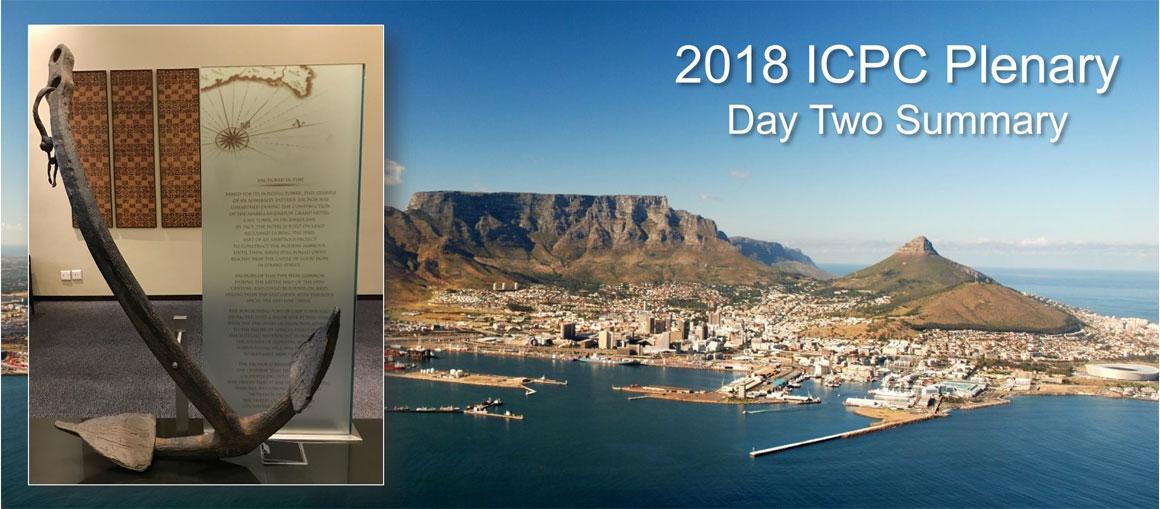
Day Two Summary
Thursday, 12 April 2018Day two of the plenary focused on the sharing of trends, challenges, solutions, and learnings related to our industry from a variety of viewpoints in the lifecycle of a typical submarine cable. The information shared in these sessions is critical for the collective brain trust of the ICPC to learn from each other to better protect critical submarine infrastructure carrying 99% of all intercontinental communications and over $10 trillion worth of transactions – Every. Single. Day.
Session Highlights
South Africa Hydrographic Office
“Bathymetry – the Foundation for Sustainable Seas, Oceans and Waterways”
An excellent overview of the organisation and how data, charts, and various publications created are used by the South African Navy, as well as worldwide shipping and other hydrographic offices interested in the area around South Africa, known as Area 7. The organisation participates in the ICPC as part of their responsibility to ensure general safety at sea within their specific area, as well as to better protect the submarine cable infrastructure by charting where they’re located.
Pelagian and Fugro
“Subsea Cables as Critical Infrastructure”
The media, general population, and governments have come to realize that submarine cables are critical infrastructure that end-users, man and machine, unknowingly use every single day. With this realisation comes increased scrutiny. The focus of the session was on how critical a detailed desktop study and survey is to maximize cable security and protection in the future, since once cables are laid, operators must live with any surrounding geographic challenges going forward.
Australian Attorney General's Department
“Closing the Gaps in Regulation of Submarine Cables: Lessons from the Australian Experience”
The island nation of Australia is highly dependent on submarine cable connectivity to the global communications network. This session focused on how Australian regulation, and subsequent imposed penalties, can be used as an example to other states. Several proposals to close notable existing regulation gaps to better protect critical submarine infrastructure was covered.
Yale University
”Marine Scientific Research”
The deep ocean is essential to monitoring climate change and natural disasters, and although oceans are monitored today, most sensor probes are floating on the surface thus limiting their data collection and are also subject to vandalism and theft. Shore-based monitoring stations are limited in scope and reach. The session proposed using submarine cables equipped with various sensors to address existing gaps, and UNCLOS implications, to improve monitoring and detection.
Global Marine
“Maintaining the Connectivity of the Cloud under the Sea”
This session focused on the criticality of cable maintenance tasks, since no matter how hard we try to proactively protect submerged assets, bad things happen resulting in faults. Mother Nature and humans are ongoing threats, especially activities related to anchoring and fishing. Proactive and reactive maintenance of submarine cables ensures the highest possible availability. Aging fleets and existing staff, coupled with shortages of skilled replacement staff, are big challenges.
Makai Ocean Engineering
“Case for More Software Assistance and Automation in Submarine Cable Planning and Installation to Improve Reliability and Efficiency”
Software automation has been adopted by many industries yielding many benefits. The focus of this session was how software-based tools can automate route planning processes yielding more reliable submarine cable installations. Slopes, obstacles, proximity to other cables and obstacles, and so on, are input into automated tools, which also reduces manual error-prone calculations. Software-based tools can be applied to route planning, installation, planning, at-sea installation management, and post-installation quality control, which improves the overall cable lifecycle.
Mertech Marine
“South Africa's Telecommunications History”
Centuries ago, South Africa was established as a key trading post between Europe and the Far East. The same situation exists today, albeit from a telecom perspective. Much has changed since 1859 when the first telecom cable linked Cape Town to Simonstown. Now, several submarine cables land along the coastline. Telecom cables have played a very critical role in the history and development of South Africa, which can be said of many other countries.
R.T. Casey
”Removal and Disposal of Aged Submarine Power Cables”
Recovery of non-telecom cables, such as power and oil-filled cables, was presented covering the rather unique insights into this delicate operational task. Although submarine telecom cables get most of the fanfare and attention in the news, there’s a whole industry associated with non-telecom cables must be highlighted, as they also play a critical role in our daily lives. The safety and risk mitigation challenges associated with recovering non-telecom cables, such as PCBs and toxins, must be properly addressed to ensure absolute minimal environmental impacts.
SINAY
”Benefits of Marine Data Science (Big Data) for the Submarine Cable Industry: French Overview”
Big data is a burgeoning technology yielding actionable insights via the manipulation and analysis of vast amounts of collected data. Its already being used across many different industries and is starting to be used in the marine industry, such as fleet management, environmental monitoring, installation risk studies, AIS-based traffic management, predictive maintenance, and of course, business intelligence. The global marine big data market size is expected to grow to over US$3B by 2025, which is a testament to the acknowledged benefits of this relatively new technology.
City University of Hong Kong
Northwestern Polytechnical University
China Hong Kong University of Science and Technology
The University of Hong Kong
The University of Melbourne
EGS (Asia)
“Cost-Effective and Survivable Submarine Cable Path Planning”
This presentation discussed how to better protect submarine cables via proper route planning and installation using software-based landform, laying cost, and seismic hazard risk models. Examples demonstrating the benefits of various models of example routes were presented. Path design models include considerations related to topography, problematic areas, earthquakes and other risks, and shielding based on triangular manifolds. Software is our future.
Pioneer Consulting, Southern Cross, and EGS
“Benefits and Challenges of a Purchaser Led Marine Route Survey”
The challenges, benefits, and lessons learned related to a submarine cable purchaser leading the marine route surveys, instead of having it included in a turnkey supplier contract, was presented. The new 15,000km Southern Cross NEXT submarine cable was the case in point. Although cost saving and project schedule advancement benefits were achieved, several challenges had to be addressed. Communication across all stakeholders was seen as critical.
Stay tuned for tomorrow’s blog that will provide an overview of the final day of the ICPC plenary.
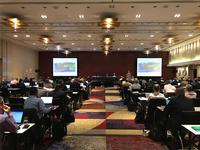

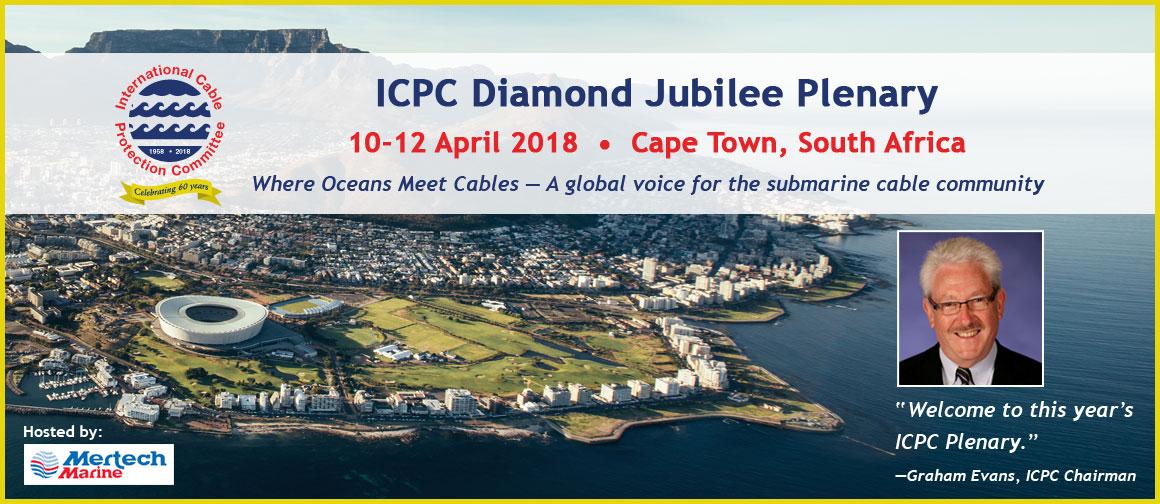
Diamond Jubilee ICPC Plenary – 60 Years and Counting!
Wednesday, 11 April 2018Graham Evans (ICPC Chairman) kicked off the 60th Plenary by welcoming everyone to lovely Cape Town for three full days of engaging and insightful discussions related to the submarine cable community. As Plenary host, Arnold Louw (CEO of local Mertech Marine) welcomed everyone to his home country by expressing his sincere appreciation in hosting the 60th ICPC Plenary. Arnold also noted the Digital Industrial Revolution Commission created by the South African government to “ensure that our country is in a position to seize the opportunities and manage the challenges of rapid advances in information and communication technology.” This initiative will undoubtedly be well-served by South Africa being a key hub for African submarine cable connectivity.
Walks Down Memory Lane
Jayne Stowell (Google) and Keith Schofield (ICPC GM) shared their views about change over the past six decades and how far we have come since being originally called the Cable Damage Committee. We have evolved from damage control to proactive protection and forethought to minimise future cable faults by helping the industry to improve burials, installation, maintenance, regulation, surveying, and other important initiatives. Jayne noted how submarine network spectral efficiency gains at showing diminishing returns, as we knock on the door of Shannon’s Limit. This means more submarine cables will be laid to address global bandwidth demand growth, which is an opportunity to improve geographic cable diversity, as there’s no “Plan B” to submarine networks. Keith Schofield provided an insightful walk down memory lane from the creation of the ICPC in 1958 to today and how our community and users of submarine cable networks, both man and machine, have and will continue to evolve in the coming years.
Sharing of the Seabed in Harmony with Others
Graham Evans and Keith Schofield provided updates on the ICPC itself, which now stands at 174 Members, with 10 additional members added in just the past year. Highlighted was how the ICPC is working with OSPAR, International Seabed Authority (ISA), International Hydrographic Organisation (IHO), UK Hydrographic Organisation (UK HO),First Institute of Oceanography (FIO), and the United Nations to improve sharing the seabed in harmony with others – the mission statement of the ICPC. This important work will continue in 2018 and well into the future.
Also covered today were ICPC Working Group updates, Legal and Environmental reviews, as well as updates on ICPC UN Observer Representative (UNOR) status and ICPC Recommendations.
Our Environment, Our Planet, Our Responsibility
The environment is a hot topic in the news, as well it should be. Lionel Carter (MEA) gave an excellent overview of the latest challenges and opportunities for the ICPC to contribute to the discussion. After all, submarine cables are laidupon sea beds around our planet. Subsequently, they are receiving increased scrutiny making the Environment Update publication an increasingly critical resource, and a highly recommended read. The impressive amounts of peer-reviewed research that took place in 2018 ensures that the impact of submarine cables on the environment is based upon fact, and not simply passion or hearsay. Mother Nature thanks you, Lionel.
Information Sharing Sessions
Always a popular topic, Andy Palmer-Felgate (Edge Network Services Limited) presented his “Global Report of Cable Repair Commencement Times”. Although the repair time itself is relatively consistent, the time to start the repair varies widely, and was the focus of Andy’s findings. Some regions improved, while others got worse, meaning more work is to be done in 2018 to further reduce these times.
The afternoon included the “Enhancing the Security of Submarine Cable Connectivity” series of presentations given by multiple industry experts covering a broad range of security-related topicsincluding encryption, cable location awareness, educating fishermen, marine maintenance, cable landing station security, regulatory, cable ship management, and active early warning systems that detect vibration energy nearby fibres. After a series of concise 10-minute presentations, an engaging discussion followed because security is always top of mind, as it should be. Submarine cables are now at the forefront of major news outlets given their recently recognised role in our socioeconomic lives making this series both timely and insightful.
ICPC Is Now More Social, Are You?
ICPC has launched a revamped website hosting loads of valuable information to help members and non-members better understand our industry. We also recognise that social media is the primary vehicle for how information and viewpoints are consumed these days and have consequently created a new LinkedIn Group that all ICPC members are highly encouraged to join to engage in lively discussions and debates on critical topics.
Stay tuned for tomorrow’s blog that will provide an overview of day two of the ICPC plenary.
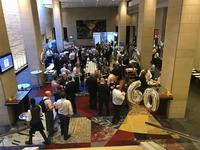
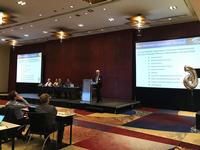
.jpg)
